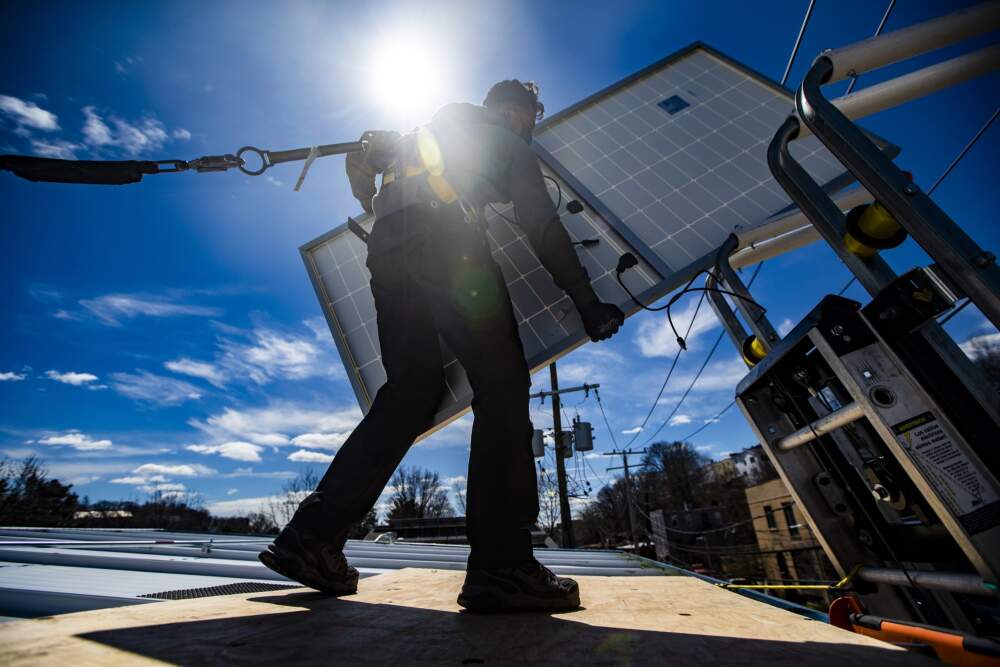Massachusetts is undoubtedly a beacon of solar energy progress. Over a decade, the state’s large-scale solar capabilities have surged from near obscurity in 2008 to account for 20% of its in-state electricity generation today. Furthermore, it produces a staggering 60% of New England’s solar power and ranks 11th in the nation for solar electricity generation. But this remarkable growth has triggered an intense debate about its environmental implications, particularly around the issue of land use.
The Cost of Solar Expansion
While Massachusetts shines as a solar powerhouse, there’s a darker side to this bright story. Over the last ten years, more than half of the solar farms built required clear-cutting forest land, and another 16% consumed viable farmland. This has not only irked local communities from Amherst to Wareham but also raised environmental concerns, such as the loss of wildlife habitats, compromised stormwater drainage, and reduced carbon storage capacity.
The Carbon Footprint of Forest Loss
A recent analysis by Harvard Forest and Mass Audubon paints a stark picture of the environmental toll. The report reveals that the forest loss from solar farm installations alone has resulted in over 500,000 metric tons of CO2 emissions—equivalent to the annual emissions of 112,000 cars.
A Sustainable Path Forward
However, the same analysis also provides a glimmer of hope. The report argues that Massachusetts can still achieve its ambitious target of 30 gigawatts of solar capacity by 2050, a significant leap from today’s 4 gigawatts, without sacrificing crucial natural lands. Michelle Manion, Vice President of Policy and Advocacy at Mass Audubon, optimistically states, “We can fulfill our solar energy needs and still preserve much of our valuable land. It’s not an either-or situation; we can have both.”
Rethinking Incentives and Planning
To achieve this equilibrium, a shift in state incentives and planning is crucial. The report suggests focusing on installing more solar panels on rooftops, covered parking lots, and smaller patches of already-developed or degraded land. Jonathan Thompson, a Senior Ecologist at Harvard Forest, points out that large, already-cleared residential lots are better suited for solar installations than virgin forests.
Tackling the Grid Connection Bottleneck
Furthermore, concentrating on smaller ground-mounted solar sites could alleviate one of the most significant challenges in Massachusetts’ solar landscape: grid connectivity. Large solar projects often necessitate costly and time-consuming upgrades to the existing electrical transmission and distribution infrastructure. As of now, at least two gigawatts of solar projects are in limbo, awaiting grid connection. The focus on smaller projects can expedite this process as they require less grid capacity.
Alternative Solutions and Challenges
A study from the state’s Department of Energy Resources corroborates these findings, asserting that there’s more than enough suitable land and rooftop space to meet the state’s solar goals without encroaching upon environmentally sensitive areas. However, this is easier said than done.
The Landfill Dilemma
Massachusetts is a leader in solar-covered landfills, but most suitable sites have already been developed. Andrew Toomajian, a Business Development Manager at SunBug Solar, notes, “While the market isn’t completely saturated, we’re running out of undeveloped sites suitable for solar installations.”
The Parking Lot Quandary
Similarly, while installing solar panels on covered parking lots seems like a straightforward solution, the reality is more complex. Parking lot structures often aren’t engineered to accommodate the weight and orientation of solar panels. Plus, there are additional logistical challenges, such as the need for protective barriers and lighting for security. Lawrence Cook of Pure Sky Energy elaborates, “The costs aren’t just a little higher; they are prohibitively higher in most cases.”
The Massachusetts solar boom is both a success story and a cautionary tale. As the state pushes towards its laudable renewable energy goals, it must do so in a way that harmonizes with environmental and community interests. The good news is that, according to experts, this is entirely possible. With strategic planning, innovative solutions, and a commitment to sustainable development, Massachusetts can indeed become a model for how to grow solar energy capabilities without sacrificing the environment. And that would be a true win-win for everyone involved.

